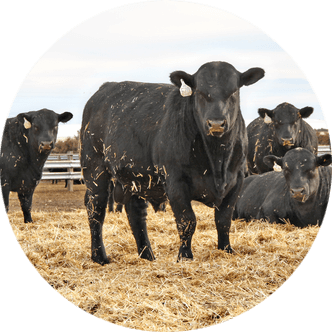Gen Z and millennials say “no thanks” to pork chops
It’s National Pork Month, and who doesn’t love pork chops? The answer isn’t what it used to be – pork chops have lost popularity, especially among Gen Z and millennial consumers.
“In the early 2000s, pork chops were one of the high-value cuts coming from the carcass,” says Jaime Luke, Michigan State University ag economist.
Pork prices
Luke specializes in livestock economics and explains in 2010, bacon rose in popularity with sky-high demand, besting pork chops and claiming the number one value in dollars per pound. Then in 2018, ham overtook pork chops in price per pound.
All this is despite a steady decline in real – adjusted for inflation – pork chop prices over the past 25 years.
Luke cites U.S. Bureau of Labor Statistics data explaining, on average, pork chops cost $4.68 per pound in 2025, down about 36 percent from $7.31 per pound in 2000, if adjusting nominal prices into August 2025 dollar terms.
Luke says demand likely drives the price decrease – not supply – because producers can’t reduce loin production without affecting the entire carcass.
Anna Dilger, University of Illinois meat scientist, says the pork chop price decline reflects a broader shift in consumer preferences, particularly among millennial and Gen Z consumers.
Millennials were born between 1981-96 and range from 29 to 44 years old, while Gen Z consumers were born between 1997 and 2012 and span ages 13 to 28. Overall, two factors drive the decrease in popularity among consumers in these age ranges.
“For a lot of millennial consumers, the pork chop of their childhood was maybe not the star of the show,” Dilger says. “It was a little dry, and it was a little tough. I’m not sure they have great memories about it.”
She also explains Gen Z approaches meal planning very differently than baby boomers, first selecting the meal and then the protein.
Dilger says other cuts of meat in the loin primal – which comprises about 25 percent of total carcass weight and includes the pork loin, tenderloin and sirloin – also face declining popularity.
Other cuts of pork have climbed in price since 2000 when adjusted for inflation. Bacon prices jumped about 24 percent to an average of $7.06 per pound in August 2025, while ham rose about six percent to $5.56 per pound.
Why? Bacon demand has grown over time, and bacon is no longer seen as strictly a breakfast food, Luke says. Now, it’s incorporated into all sorts of recipes.
But of those three cuts, pork chops are the only one which has decreased in value since 2000.
“If we continue to see a decline in the demand for pork chops, it could impact the wholesale value,” Luke says, explaining how the decline hurts pork producers.
She also explains export markets play an important role in maintaining strong pork value for farmers.
“We produce about as much loin as we do ham when it comes to primals, but we have a really strong export market for ham,” Luke says, noting Mexico receives over one-half of exported hams, while no comparable strong international markets exist for the loin primal.
“Good pork”
About three years ago, the decline in pork loin demand caught the attention of meat scientists and the National Pork Board.
Discussions among producers, consumer experts and scientists led to a checkoff-funded project, partnered with the American Meat Science Association, to address this decline in demand, particularly among Gen Z and millennial consumers.
Dilger emphasizes the pork industry needs to refine pork production to meet consumer preferences. While pork farmers love their product, she explains producers alone cannot support the industry – consumers must support pork through increased consumption.
For this to happen, Dilger says industry leaders need to consider what consumers want and how they can modify production to meet this demand.
“What do people want and how can we deliver it to them?” Dilger asks.
In summer 2025, the team – put together by the American Meat Science Association, including Dilger and other scientists from Ohio State University, Iowa State University and Texas A&M University – began the next phase of the project, aimed at identifying what consumers describe as “good pork.”
To accomplish this, they evaluated pork loin quality based on color, marbling, tenderness and sensory traits, such as juiciness and flavor, through expert taste panels.
Dilger expects to complete this research phase within the next year. Her preliminary findings align with her previous decade of research – pork chops are very tender. However, she believes pork chops lack natural flavor compared to beef.
Once Dilger completes current research, she will work with others to begin a longer phase which traces consumer preferences back to animal production practices, such as nutrition and genetics.
“It’s actually an effort that has to happen at all sorts of levels – genetics companies, nutritionists and meat scientists are the people who help shape what pork is going to be,” Dilger says. “But consumer market researchers and focus groups help to shape and understand what people want.”
Luke agrees this research matters to the long-term profitability of hog farmers.
“Loins make up such a big part of the carcass, and it’s really important demand for them stays strong,” Luke says.
Ava Splear is a staff writer for Prairie Farmer. This article was originally published by Prairie Farmer on Oct. 23.





